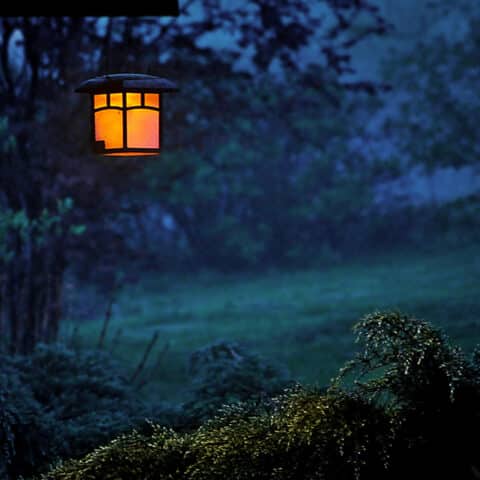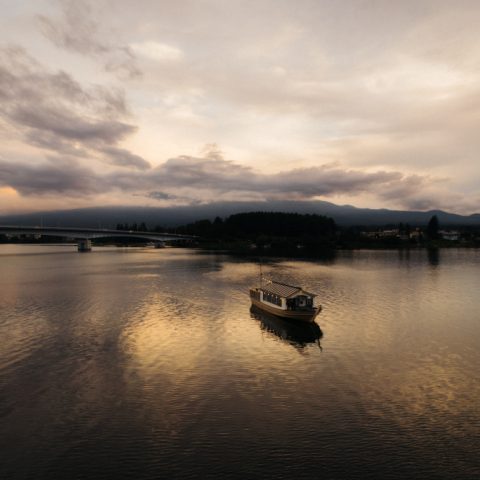
Greetings everyone! Today, let’s learn about the Iizukatei Hotel, a 200-year-old traditional Japanese inn, which is a fascinating ryokan resting in the heart of Nakagawa, Tochigi Prefecture. It is known for its unique blend of traditional Japanese architecture and modern facilities, offering tourists a chance to experience the charm of rural Japan.
So, let’s delve into the history and some interesting stories of this traditional inn!
Hello, thank you for your time today! Can you please introduce yourself?
Thank you very much for letting us share about Iizukatei and the town of Nakagawa-machi. My name is Maylene, the hotel’s concierge and person in charge of inbound promotions and marketing. Iizukatei opened at the end of 2019, and this is my 3rd year with the hotel.

Showing the beauty of lizukatei Hotel – Photo Credit: Iizukatei Hotel
We’d love to hear about the history of the Iizukatei Hotel, as it is a 200-year-old inn.
Iizukatei Hotel is the first registered cultural heritage site to be renovated into a hotel in Eastern Japan. The property’s history dates back to the Edo Period, and although buildings have been taken down and rebuilt over time, there are a few remaining structures from that time, such as the main gate in front of the garden. Also standing strong is a black pine tree (kuromatsu) located in front of the Shintaku building with visible katana scars remaining from a battle during that era.
The town of Nakagawa was once two villages, Bato and Ogawa, separated by the Naka River. From the Muromachi Period (1336-1573), this area was the domain of the ruling lord Mumo Kanetsuna. A castle built atop the mountain behind present-day Iizukatei overlooked the village of Bato. Unfortunately, there are few visible remains of the castle site.
With a change in the governing system to shogun rule (military rule) from the Edo Period, Bato and a section of Ogawa became a part of the Mito/Tokugawa territory. The Iizuka family of Bato were the head family of the village and held an important ruling position amongst the Mito Clan.
In the final years of the feudal era of Japan, the Mito Clan was divided into two factions, Tengu and Shosei. Iizuka House, a part of the Tengu faction, went to battle with the Shosei faction in 1864. The black pine tree in front of the Shintaku building on the estate received cuts from a katana during the battle, which are still visible to this day.
The main gate in front of Hontaku and the side gate into the garden both remain in excellent condition. In a township where few buildings remain from the end of the Edo Period, Iizukatei remains an excellent example of the history and battles of the area.
The four buildings that presently make up Iizukatei, Shintaku, Hontaku, and both of the storehouses are all from the Meiji Era (1907-1908), with some rebuilding and renovation happening during the Showa Era. However, as some parts of the estate remain from the Edo Period, it was recognized for its cultural value, and in 2003, Iizukatei was registered as a National Cultural Heritage Property.

The Amazing Night View of Iizukatei Hotel – Photo Credit: Iizukatei Hotel
We have heard that the lizukatei Hotel was a private residence before, is it true? If so, how did it turn into a hotel?
The property is the former residence of the ‘Iizuka’ Family, who used to be the village head of Bato, which is part of the wider area called Nakagawa-machi (or Nakagawa Town). As members of the Iizuka family moved out of town, eventually relocating to Tokyo, they decided to donate their residence to the town, and the property was later officially registered as a tangible cultural heritage property.
The Iizuka Family consulted our main company, Ohtawara Tourism, which is a DMO (Destination Management Organization), to inquire as to whether there might be a way to use the property that could benefit the local area and community. After thinking of different ideas on how to preserve the buildings while at the same time utilising them for a purpose that could contribute to the town, it was ultimately decided to turn them into a hotel. Once the town was on board to have this type of hotel, Ohtawara Tourism requested government aid, and soon after, renovations were able to commence. Iizukatei Hotel had its grand opening in 2019.
Ohtawara Tourism focuses on sustainable tourism, and for a small town with a population of roughly 15,000 people, we hope to attract the attention and the type of travellers who would enjoy this hotel concept and be a part of helping those who still reside in these countryside communities.

View from Inside of Iizukatei Hotel – Photo Credit: Iizukatei Hotel
What inspired you to blend the building’s traditional architecture with the latest amenities, and what are some of those architectural elements?
As a registered tangible cultural heritage property, there are some restrictions we had to keep in mind, such as not being able to light fires within the property, as well as not being allowed to alter the outer structure of the buildings. Although you have the freedom to renovate the inside of the building, we tried to keep as many of the original features as possible and make use of any remaining furniture and items from the previous residence.
It was important to preserve the character of the rooms to allow guests to see how the spaces were originally used and feel the history associated with them while also being able to comfortably relax and enjoy the latest amenities available in a modern hotel. The stark contrast of luxury elements blending together with historical elements dating back to the Edo Period in the middle of a countryside town is what makes the property unique.

A view of the Residence of the Iizuka Family, now converted to Iizukatei Hotel – Photo Credit: Iizukatei Hotel
What are some of the activities guests can enjoy while they stay at your hotel? Are there any recommendations you’d love to give to our readers?
I am still surprised at the number of activities available that are concentrated in this area despite being so rural. For those interested in crafts, pottery making, washi paper making, and tatami making, experiences are available in the area and are run by local family businesses that have been operating for over four generations or more. Rice and soba fields are abundant in this area as well. Therefore, soba-making at riverside restaurants or a sake-tasting experience at a local brewery is common, and depending on the season, picking various fruits or unique items like wood ear mushrooms is also possible.
For guests that are willing to travel up to 30 minutes (by car) to the neighbouring towns, there is an even wider variety of activities, such as Zazen meditation and numerous sightseeing spots that are hidden gems. An activity that our guests often request is the “Farm to Table Dining” experience, which consists of enjoying a meal together at a local farmer`s house. Many guests who were able to enjoy a unique and fresh meal while conversing with locals have found it a memorable experience that they would not have had if they only stayed in Tokyo, Kyoto, or Osaka.
How can we forget about food, so can you please let us know some of the best options for tourists visiting the hotel?
In Nakagawa town, there are three local food spots where you can find people lining up, even on weekdays. The first restaurant is called Michi and is known for its unique mixed omurice and juicy hamburger steak. Secondly, we have Hamu, who has an excellent and tasty thick-cut tonkatsu pork cutlet. Last but not least is Setsugekka, which offers massive shaved ice desserts filled with top-quality fruits, homemade whipped cream, and syrup, assembled into flavor combinations that have won them “Best Menu” awards in Japan.
For region-specific foods, delicious rice (and therefore sake), soba noodles, and Tochigi’s well-known crop, strawberries, are recommended for you to try when you are visiting.

A view of the Bedroom – Photo Credit: Iizukatei Hotel
How many types of rooms are available at your hotel?
There are a total of 6 rooms within the four buildings for accommodation on the property, and they are split into two types, although each room has its own character and unique style.
There are three loft-style rooms in the storehouses, which have a bedroom on the 2nd floor with a living room, mini kitchen, and bath located on the 1st floor. In the larger buildings, there are three apartment-style rooms that are equipped with a full kitchen, a washer/dryer, a living room, a bath, and extra futon mattresses that can be prepared for larger groups of up to 4-5 adults.

A View of the Inside of a Room in Lizukatei Hotel – Photo Credit: Iizukatei Hotel
All of the rooms were designed so that guests would have the amenities to be comfortable for both short- and long-term stays. They can have the freedom to choose different options, such as enjoying catered meals in the room, preparing their own meals using the kitchen, or exploring the local restaurants and shops in town.
To accommodate the different types of travellers, we have different accommodation plans so that guests can customise their stay. That way, solo travellers or couples to families and friend groups can book options that best suit their needs.

Rest Area of an Exquisite Room of Iizukatei Hotel – Photo Credit: Iizukatei Hotel
What are some things that make you different from the other inns and hotels around the region?
The property being a cultural heritage site, as well as the contrast of traditional architecture with modern amenities as a boutique hotel, are factors that make the hotel unique compared to other accommodations in the region. However, I feel that the concept of the hotel, which is viewing the entire town and local community as a hotel versus a resort hotel that has everything located on one property, is one of the main characteristics that make Iizukatei different. By this, we mean that we encourage our guests to go out into the town, whether it is eating at the local restaurants or booking activities with the craftsmen and businesses that have been in this area for generations.
We also have partnered with shops along the main Shoutengai street in providing our guests with a shopping coupon to use at their stores (Due to the aging population and migration of young people to cities, the local customer base for these small businesses is shrinking). Our goal is to support the community in these rural areas by making the effort to introduce them to our guests and use local products and crafts at the hotel wherever possible.

Iizukatei Hotel – Photo Credit: Iizukatei Hotel
Is there any exciting news for the future of Iizukatei Hotel that we can all learn from this blog?
Currently, we are working on updating our website to be able to offer various activities and even seasonal accommodation plans. Our company and hotel staff are always thinking of what we can do to improve the experience of guests at the hotel, events that we can create, or ways to build more connections in the town. We hope to provide more information to both our Japanese and international guests on the website so that they have a better idea of the local area and services that we can offer.
At the end, is there something you’d like to share with our readers?
I’d like to say thank you to the readers who may have come across this and taken the time to read and learn a little bit about Iizukatei Hotel. We know that making the journey out here is taking a chance on us because this area is not normally viewed as a sightseeing destination. However, if you would like to experience something different from what is normally on a Japan itinerary, there are so many hidden gems that we would like to share with you. We are a small team, so we do our best to help our guests in any way that we can so that they enjoy their stay as much as possible. (If anyone has any other questions or would like to inquire about planning a future visit, please feel free to contact the hotel directly.)
Thank you so much for taking out your precious time for us and answering the questions! We appreciate your insights, and we are glad you joined us for this interview!
Follow Iizukatei Hotel on:
Website: https://iizukatei.ohtawaragt.co.jp/en/
Instagram: https://www.instagram.com/iizukatei_hotel/
Facebook: https://www.facebook.com/iizukatei/
Company Website, Ohtawara Tourism: https://www.ohtawaragt.co.jp/
Be sure to check out Iizukatei Hotel on your next trip to Japan and Plan your WHOLE trip with us. We can arrange the best activities and accommodation.



